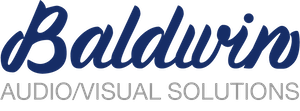Hybrid events are a relatively new approach in a space that’s always thrived on the in-person experience and energy. You also have to keep two different audiences engaged and find ways to create unique attendee experiences for both attendee types. With all the different platforms and approaches that have emerged over the past couple of years — as well as the tried, tested, and true in-person event staples — event planners and designers are now tasked with crafting event experiences.
Stakeholder Engagement
The event audience members, both in-person and online, should be thought of and treated as stakeholders. In the same way that an organization would engage any relevant stakeholders and design a project around delivering on the necessary items, this is what your virtual or hybrid event needs to accomplish. If you have insight into the makeup of your potential audience, what they’re looking to get out of the event, and what you’re ideally trying to deliver, you can better tend to the experiential aspects of the event.
Timing and Agenda
Hybrid events come with an added level of complexity because of the different components they’re made up of. As a result, it requires lots of time in advance of the event to plan, create, and put together everything that will be needed. It’s not just time for the event planners that’s required but also the presenters, exhibitors, etc. It’s also important to carefully manage time during the event as well.
You need to strike the balance between the time needed for each presentation or activity while making sure things aren’t too long as it’s harder to keep online attendees focused on their screens. Whether it’s visual distractions like notifications, emails, or just knowing that they’re a tab away from looking at literally anything they want, you need a strategy-based approach to the agenda with interactive and engaging content delivery.
Realities of Today
In today’s world where working remotely has become more and more normalized, event planners need to recognize certain truths and plan around them. Events need to be designed to accommodate work obligations attendees might have throughout the day. Whether it’s baking in free time and breaks in the agenda or providing working spaces at the live venue, showing that you’re aware of this means attendees will focus more during presentations if they know they’ll have time afterward to handle their business.
Since online and in-person attendee experiences differ, it may be worth considering having some separate content streams in your agenda that are exclusive to each. Different audiences have different needs and expectations which means having different promotional strategies, timing, and content. It might even be worth investing in different hosts and emcees so each audience type feels like they are being catered to specifically. There’s also the need to address explanations around digital event technology and how to use things like online polls, commenting, or submitting questions during a Q&A.
Hybrid formats may be more complex and require more planning but good preparation combined with an empathy-driven approach to the attendee experience are major keys to success! Contact Baldwin Audio/Visual Solutions today to learn more about our event solutions.

